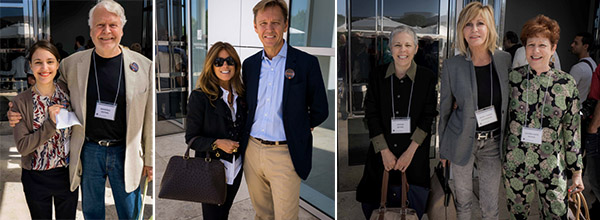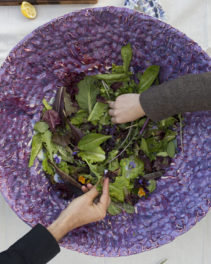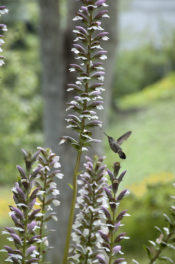On photography’s 175th birthday, experts gathered at the Getty Center to discuss the medium’s past and future. Here, a recap and full audio of the sessions

George Baker, professor of art history at UCLA, offering the keynote address. On screen: photograph by Julia Margaret Cameron
Photography was first announced in 1839, making the year 2014 the medium’s 175th anniversary. For the occasion, the Getty Museum’s Photographs Council—a group of collectors, connoisseurs, and photography enthusiasts who support the Department of Photographs—hosted a daylong symposium featuring leading figures in contemporary photography.
As Council members, we were gratified by the sold-out crowd of photography buffs, teachers, and students who attended this educational and collegial event.
The focus of the symposium was on noted photographers who studied, teach, and practice in Los Angeles, as well as the views of local scholars, curators, and critics on the art of photography and where it is headed.
Keynote speaker George Baker posited that photography inherently records the past and also revives the past, as photographers employ old techniques in new forms. Baker discussed photography as an art form that adapts to advances in technology and frequently incorporates other media as well. As an example, he cited the works of Zoe Leonard, a photographer and sculptor whose influences include Eugène Atget and Walker Evans.
An Education: Teaching and Studying Photography in L.A.
The artists on the first panel related personal stories about learning photography in local colleges and later teaching it in Southern California. They recalled how it wasn’t until the 1970s that photography came to be considered a fine art. Before then, local photographers formed their own organizations and mounted their own shows. Gradually, a few brave L.A. gallerists began offering “art photography” for sale, and finally California museums established photography departments and presented exhibitions.
In her remarks later in the day, Judith Keller, the Getty Museum’s senior curator of photographs, explained how the Getty collection was established by curator emeritus Weston Naef in 1984 with the purchase of important photography collections, including that of Sam Wagstaff, Jr.

Photographers James Welling, Robbert Flick, John Divola, and Jo Ann Callis with moderator Anne Tucker (far right), Gus and Lyndall Wortham Curator at the Museum of Fine Arts, Houston
Los Angeles Shoots Itself: Looking at Southern California
On the multi-generational second panel, the photographers discussed their different approaches to their art—Stephen Shore’s observational documentary photography, Alex Prager’s staged cinematic images, Harry Gamboa, Jr.’s engaged activist provocations, John Divola’s conceptual mix of painting and photography, and Matthew Brandt’s experiments using lake water, dust, bubble gum, and cocaine to process his pictures. The panelists agreed that the city hasn’t fostered a distinct style, but instead has allowed its artists freedom and lack of boundaries—exactly the elements that have made L.A. art famous.

Curator, writer, and teacher Colin Westerbeck moderated the second panel

Photographers Stephen Shore, Alex Prager, Harry Gamboa, Jr., John Divola, and Matthew Brandt
From the Rearview Mirror: Critical Perspectives on L.A.
The curators on the final panel discussed how museums collect photographs, work to preserve photographic history, and attempt to promote emerging artists. Los Angeles Times critic Christopher Knight welcomed the recognition of photography as a major art form that finally has a “room of its own,” as major museums provide dedicated spaces for photographers’ work.
Collector and Council member Jan de Bont talked about the adventure that he and his wife have experienced collecting photography, ranging from black and white ‘30s Eastern European images to James Welling’s color-filtered contemporary Glass House.

Members of the third panel: Jennifer Watts (curator of photographs, The Huntington Library, Art Collections, and Botanical Gardens); Christopher Knight (art critic, Los Angeles Times); Rebecca Morse (associate curator, Wallis Annenberg Photography Department, LACMA), Jan de Bont (filmmaker, collector, chair of the Getty Museum Photographs Council), and Virginia Heckert (curator, Department of Photographs, Getty Museum)
It was a tribute to the event that the audience and participants remained after the discussions to enjoy the L.A. afternoon views while exchanging their own views on the art of photography.

Left: Getty Museum assistant curator Amanda Maddox with collector and Council member Manfred Heiting. Middle: Getty Museum director Timothy Potts and photographer Kathy Suder. Right: Getty Museum Photographs Council members Denise Bethel, Anne Cohen Ruderman, and Gloria Katz Huyck
Text of this post © Willard Huyck. All rights reserved.




Comments on this post are now closed.
Trackbacks/Pingbacks